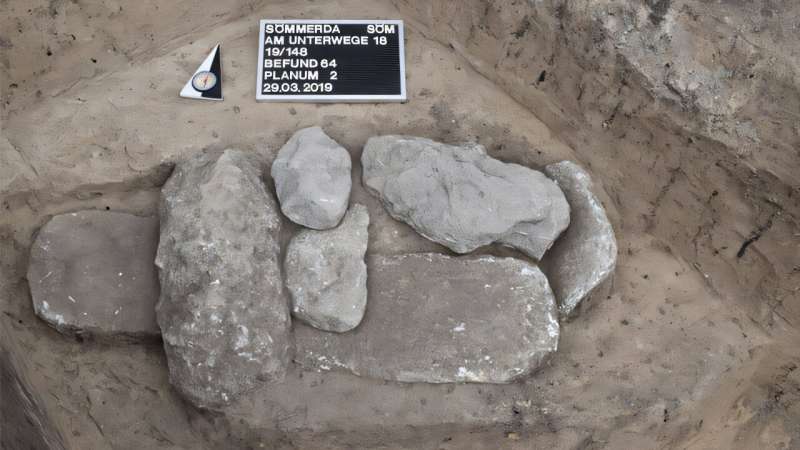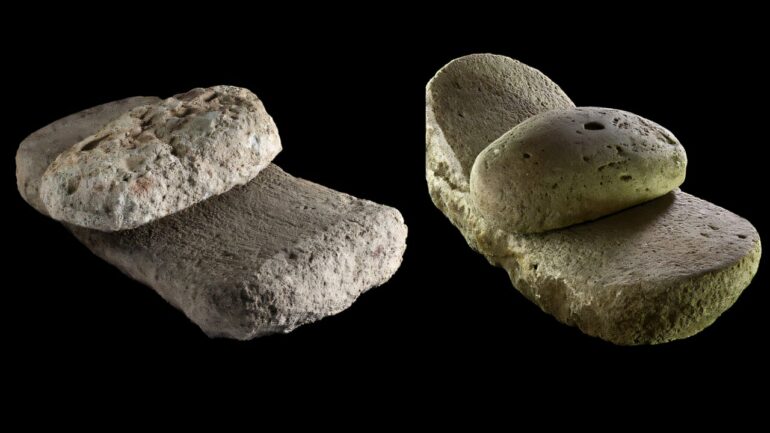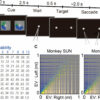The hand-held grinding tools used to process cereals that the first European Neolithic societies buried in deposits had a high symbolic value for the women who used them, related to time and the cycles of human life, nature and settlements. This is the conclusion that researchers from the UAB have reached after studying the grinding stones of three ritual sites found in recent years in Germany. The research was recently published in the Journal of Archaeological Science: Reports.
Two of the deposits studied are located in Goseck (Saxony-Anhalt), one of the oldest ritual sites in Europe, and a third one in Sömmerda (Thuringia). The three belong to the Linear Pottery culture that existed at the beginning of the Neolithic period (4900 and 4650 BC) in Central Europe. Researchers studied the technical, functional and morphological characteristics of the tools they contained, fourteen sets of grinding tools, as well as the arrangement and orientation of the items inside the deposits, in order to further study their symbolic meaning.
The study indicates that some grinding stones were withdrawn from the domestic context practically new, others in the middle of their useful life and others were completely worn-out. The artifacts were carefully placed in pairs, with the working parts in contact and oriented from east to west. They were made with materials located at a distance from the deposits and a great deal of time was spent producing and curating them, both in the case of the grinding slab and the grinder.
“These results reflect the high social value that these objects had and lead us to consider that the notion that is at the heart of the ‘biography’ traced by the tools is time. A concept embodied in stages of production, use, reproduction and burial, which suggest cycles of birth, life and death, and contemplated from the perspective of women, the main users of these stones,” explains Erik Zamzow, doctoral researcher at the Department of Prehistory of the UAB and first author of the study.

Planum 2 of the grinding stone deposit of Sömmerda with the first layer of tools. © S. Schneider, TLDA
From the basic daily tasks to the abandonment of the villages
The use and maintenance of the grinding stones in the domestic context would represent the basic daily tasks of women of the Linear Pottery culture. The selection of new, used and almost worn-out tools would symbolize the group and transmission from generation to generation. The levels of wear would be related to human life cycles, as an allegory of birth, life and death. Finally, the tools and their ritual deposit may also reflect the life of the Neolithic populations, which changed their location every few years, possibly also every generation or two.
“The intention conveyed by the deposits is a complex and polyhedric notion of time, which goes beyond the rhythm of annual harvests with which they have been related until now,” says Roberto Risch, researcher at the Department of Prehistory of the UAB and coordinator of the study.
“The symbolism would be related to the lives of specific women, such as those who still today make use of these types of grinding stones for hours a day in self-sufficient agricultural societies. Each grinding stone would be the result of a daily adjustment between a woman’s body and her tools for years and decades,” says Risch.
The samples analyzed in the research are similar to others that have been found in France and Belgium. With some differences, others have also been found in several Central European regions. In total, 20 deposits and 89 tools are known, attributed to 13 settlements or ritual enclosures.
Discover the latest in science, tech, and space with over 100,000 subscribers who rely on Phys.org for daily insights.
Sign up for our free newsletter and get updates on breakthroughs,
innovations, and research that matter—daily or weekly.
Previous studies on the symbolism of these deposits have made temporal references to day and night, the agricultural year, fertility and festivities. The present study shares some of these interpretations, but researchers highlight that it adds a new layer of symbolism, with the lifetime of women as a central theme.
“The techno-functional evidences of the tools have almost not been taken into account to explore the symbolic meaning of these types of deposits. Future studies incorporating the methodology we have applied here could serve to contrast our hypothesis,” says Marina Eguíluz, also author of the study and doctoral student at the Department of Prehistory.
The researchers emphasize that the intention of these deposits, the selection of objects and their placement appear as an important issue in the economy and ideology of the Early Neolithic. They reflect the practices, values and beliefs of the first agricultural communities of Central Europe and highlight their complex perception of time.
More information:
Erik Zamzow et al, Grinding Stone Deposits of the Linear Pottery Culture in Central Germany, Journal of Archaeological Science: Reports (2025). DOI: 10.1016/j.jasrep.2025.104998
Provided by
Autonomous University of Barcelona
Citation:
Time and life cycles reflected in the grinding stones of Europe’s earliest Neolithic communities (2025, February 27)



